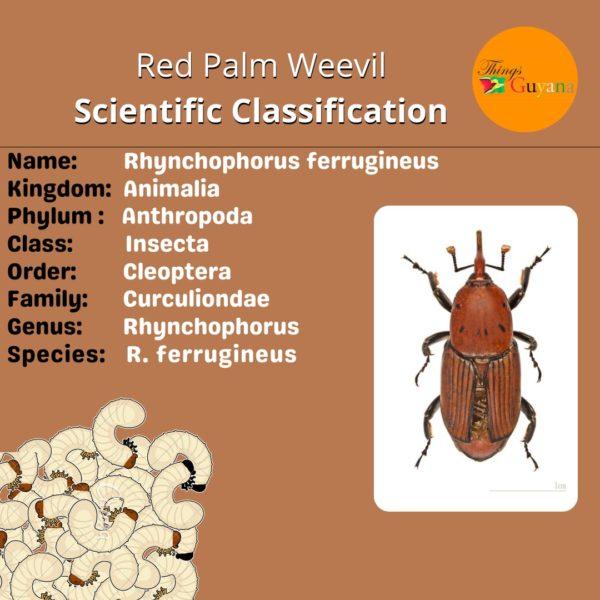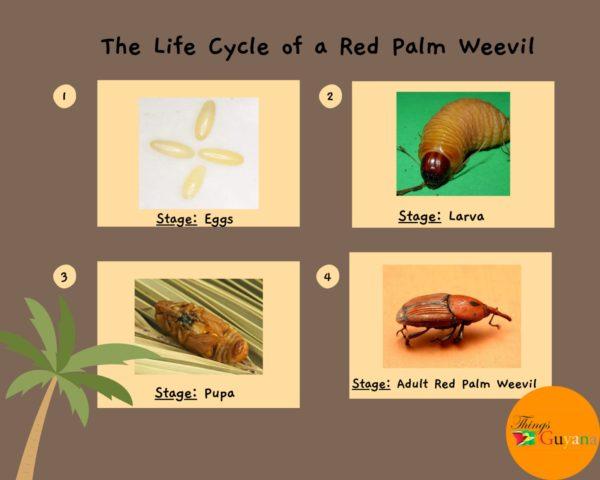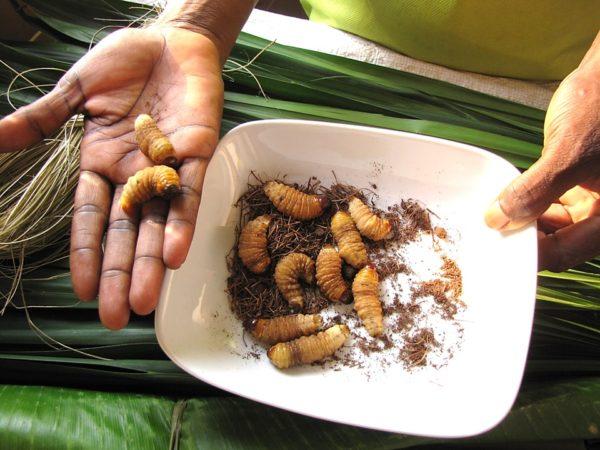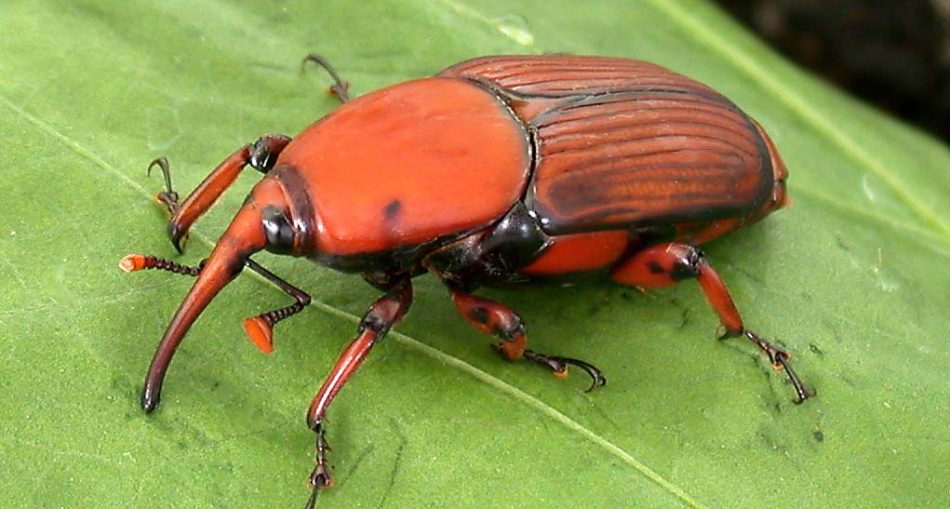The title of this post is not clickbait! You can actually consume this beetle’s larvae and it is added to the diet of many indigenous people in Guyana. You have probably heard of ‘Tacoma Worm’ before but these juicy critters are not actually worms but instead the larvae of the red palm weevil.
Note: A worm is referring to the adult stage of the animal whereas the larvae, although it looks like a worm, are just a developmental stage within another animal’s life cycle.
Red Palm Weevil

Description
These adult beetles are relatively large and can grow anywhere from 2cm up to 4cm (1 to 1/2 inches) long. The majority of the species are rustic red in colour with some variations being a reddish-orange colour or even all black. At the head of the beetle extends a long rostrum that holds the antenna and mandibles.
Note: The rostrum is the snout-like projection that can be seen on some insects such as the beetle.
Reproduction
Female red palm weevils lay approximately 200 eggs individually into the soft tissue at the trunk of palm trees where there might be any cracks or wounds. Eggs are creamy white, shiny, and oblong. Larvae are present and hatched about 6 days after the eggs were laid. The larvae feed on the soft tissues with a low or moderate proportion of fibers. Larvae are creamy white, legless, and pyriform with a brown head. They have a body that comprises f 13 segments. Fully grown larvae will migrate to the edge of palm fibers to create their cocoon which is made from rolled-up palm fibers. This total lifecycle takes 3 to 4 months.
Fun Fact: The larvae stage passes through several other stages which take up to 2 months
Diet
Red palm weevils feed on a variety of palms including coconut, sago, date, and oil palms. They also eat bananas, sugar cane, squash fruit, and palm crown.
Habitat
These beetles originate from the tropical regions of Asia and quickly made their way to Europe and Africa. They reached the Mediterranean during the 1980s.
Adding The Larvae To Your Diet
The Larvae of this beetle are considered a delicacy in a lot of Southeast Asian cuisine. In Guyana, the larvae are known as ‘Tacoma Worms’. The Tacoma Worm is found in a small clearing in the forested regions of Guyana and is feasted upon by the indigenous Arawak tribe. They are even farmed so that these dishes can be sold and enjoyed. The worm can be enjoyed raw, sauteed, or roasted over a fire.
How To Prepare Tacoma Worms

Photo of Tacoma Worm. Photo Source: https://commons.wikimedia.org/wiki/File:Rhynchophorus_ferrugineus_-_edible_larvae_of_Red_Palm_weevil.jpg
- Place a pan over the heat with a bit of oil.
- Add five to six Tacoma worms into the pan.
- Keep stirring on slow heat and add a pinch of salt, pepper, and onions to add flavour.
- After it is fully fried, turn the heat off, allow it to cool, and enjoy!
Benefits
Consuming these worms may seem like an off-putting idea, after all, they aren’t the most appetizing meal, but, they have many nutritional benefits. They are a rich source of protein, healthy fats, vitamins, riboflavin (vitamin B2), iron, and minerals. They are heart friendly and can lower cholesterol.
Fun fact: Insect-based protein is more sustainable than meat such as cows due to their low greenhouse gas emissions, and low land, and water use.
Don’t hate it until you try it!
References:
- https://www.koppert.com/challenges/pest-control/beetles/red-palm-weevil/
- https://en.m.wikipedia.org/wiki/Rhynchophorus_ferrugineus
- https://pulitzercenter.org/stories/finger-licking-good-insects-could-be-future-food







